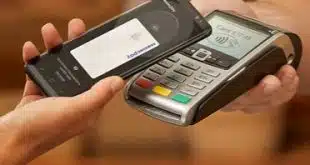E-commerce has been setting records during the coronavirus pandemic, but processors should be thinking about ways to innovate. For example: how to make transactions simpler, faster, and more secure?
Prior to the coronavirus pandemic, e-commerce was big business for merchants and processors. But since the pandemic struck in March, online business has been on steroids and shows no signs of slowing down.
During the second quarter of 2020, e-commerce sales in the United States totaled $211.5 billion, or 16.1% of total retail sales, according to the Department of Commerce—up from $138.9 billion, or 10.8% of total sales, in the same period a year earlier. That’s with travel and ticketing—two big-ticket categories—suffering substantial drops in volume.
More telling is that the data shows more than $1 in every $5 was spent online in Q2 2020—the highest penetration for e-commerce of any quarter or year on record, according to Digital Commerce 360—Retail.
Nor is there any slowdown for the holiday shopping season. ACI Worldwide Inc. predicts a minimum 20% to 30% increase in holiday e-commerce sales this year compared to 2019.
No wonder. With merchants rolling out holiday shopping deals earlier than ever, e-commerce volume rose 23% year-over-year in October. In September, ACI predicted that global e-commerce sales would rise 27% in the fourth quarter compared to 2019.
The big reasons merchants began promoting holiday shopping so early were concerns about inventory shortages closer to Christmas and longer than usual shipping times, says Erika Dietrich, vice president for global risk services at Naples, Fla.-based ACI.
On the consumer side of the coin, she says, e-commerce surged because of two main factors: online shoppers are purchasing with greater frequency, including setting up subscriptions to automatically order household staples; and numerous first-time buyers are flocking to the channel.
If a merchant didn’t have an e-commerce channel prior to the pandemic, payment experts say, they immediately set one up. Meantime, merchants that already had a digital sales channel began pouring more resources into it to enhance the user experience—such as by adding digital-wallet acceptance—to grow sales and keep customers coming back.
For many small and mid-size merchants, e-commerce has been the lifeline that has kept them afloat in the midst of a worsening pandemic that cut instore traffic to a fraction of pre-pandemic volumes.
That’s good news for payment processors, because even when a coronavirus vaccine becomes widely available and life returns to so-called normal, most of the gains in e-commerce volume will be retained, payment experts say.
The reason: many new online shoppers have become hooked on the convenience and safety of the digital channel for everything from groceries, clothing, and bedding to electronics, camping supplies, and home-gym equipment.
“We expect a lot of this volume to stick once Covid subsides, especially with many first-time buyers becoming recurring customers through subscriptions,” Dietrich says.
Streamlining Checkout
But there’s some groundwork to be done before processors can begin cashing in, experts say. They will need to push the boundaries of their technology to enhance the customer experience, secure the data around all those new transactions, and keep a lid on fraud.
“For e-commerce purchases, customers expect a direct and quick payment experience,” says Suneera Madhani, chief executive and founder of Orlando, Fla.-based processor Fattmerchant Inc., by email. “In response, many merchants are looking to provide a simple shopping experience to their customers. This is paramount in a time when conversion metrics really matter due to the decreased demand and/or limited availability of in-store purchasing options.”
To reduce friction, she says, merchants need to be thinking about offering payment capabilities that offer customers’ preferred methods and that also offer a quick and easy checkout.
“Having a seamless checkout process is part of the greater shopping experience,” Madhani adds. “It’s why providing familiar and quick options to access credit card details via vault tokenization services has exploded. Additionally, digital wallets such as Secure Remote Commerce have the ability to provide merchants with the desired user experience by enabling Apple Pay, Google Pay, Masterpass, Visa Checkout, [among others].”
Developed by the four major card networks, Secure Remote Commerce is a technology standard that streamlines online purchases, whether through a mobile device or a laptop, by mimicking the in-store experience of a single payment terminal that accepts multiple card brands.
To use SRC, which has since been renamed “click to pay,” consumers must create a profile through merchants offering the service. Profile data includes the consumer’s email address, which serves as her click to pay ID, and mobile phone number. Next, the consumer enters her payment credentials, i.e. card number, expiration date, card-verification value code, and billing address. Upon completion of the profile, a six-digit verification code is generated.
To make a purchase, a consumer enters her click to pay user ID, thereby eliminating the need to enter payment card data and billing address information. Adopting click to pay will enable merchants running transactions on the card brands’ respective networks to offer a one-click checkout experience similar to that of PayPal or Amazon.
“The convenience of cards on file has been a massive game-changer for the merchants’ ability to compete against legacy players (Amazon, eBay, etc.) that used that as their differentiation,” says Madhani.
Streamlining the payment experience can also help reduce shopping-cart abandonment as consumers don’t have to fill out multiple data fields to complete a transaction. In May, Visa said it found that without SRC in place, a consumer must negotiate an average of 23 fields to complete an online purchase.
Experts have warned for years that having to enter too much payment data can cause a consumer to walk away in a heartbeat.
In addition to one-click convenience, click to pay limits exposure of a consumer’s card data by not requiring it to be manually entered and secures the transaction through cardholder authentication and tokenization.
“Click to pay enables security and convenience that can give consumers more confidence to transact with merchants that did not have the resources to develop a one-click payment option on their own,” says Andrew Hopkins, senior vice president of global products for Discover, which rolled out click to pay in October.
“Small merchants are realizing they need to move into e-commerce and need tools to create a better user experience that helps them compete with larger players,” Hopkins adds.
Although all four card networks have rolled out click to pay, the technology has yet to scale in a meaningful way, making it difficult to gauge its impact on the customer experience, says Nandan Sheth, head of our global digital commerce for Brookfield, Wis.-based processor Fiserv Inc., which gained considerable heft in e-commerce via its $22-billion acquisition of First Data Corp. in 2019.
But the technology appears to picking up steam. In May, Visa revealed it had added more than 10,000 U.S. merchants to click-to-pay since January. The service also claims 37 million active Visa users. Visa did not make executives available for an interview.
While payment experts are confident click to pay will achieve mainstream adoption, Madhani cautions that any competitive advantage it offers may be short-lived as more stores offer similar experiences. “Increased competition with a similar look and feel means there must be … value added to the checkout/shopping experience for the consumer to experience a deviation from expectations,” Madhani says.
Beyond Boundaries
While reducing friction at checkout can help improve the customer experience, payments experts say processors and merchants need to think beyond the traditional boundaries of shopping at a Web store. In other words, they need to be thinking about technology outside traditional e-commerce channels.
One technology getting a good look is voice activation. The technology is already gaining attention in physical-world situations. It can allow a consumer to voice-activate a gas pump and pay for the purchase using an app on her mobile phone in the comfort of her car, says Sheth, who adds that Fiserv has partnered with a third-party to develop such a technology.
“We are seeing augmented reality in e-commerce that enables a consumer to virtually try on a pair of glasses through their phone or computer, and voice-enabled commerce as a natural extension,” Sheth says. “The aim is to enable a digital wallet beyond payment and provide ways to create a richer user experience in an omnichannel environment.”
One way for e-commerce merchants to increase customer engagement is through the aggregation of credit and debit cards’ primary account numbers (PANs) to identify an online shopper, at least by number. each time the PAN is used. Armed with this information, merchants can create a customer profile based on the PAN.
Merchants can then serve up promotional offers or requests to enroll in their loyalty program. “Unless a shopper is enrolled in a loyalty program, the transaction is essentially anonymous,” says Sheth, who adds 7 million new buyers over the age of 40 will begin purchasing online by the end of 2020.
Fiserv says that digital adoption is occurring across multiple generations from the Baby Boomers on down
Another way to enhance e-commerce is to digitize invoices and embed payment links. Waltham, Mass.-based BlueSnap Inc., which provides online payment solutions for e-commerce, business-to-business, and software-as-a-service companies, has seen a rise in digital invoicing since the pandemic hit. Small merchants, such as landscapers or tradesmen, are using digital invoices to bill customers and collect payment as face-to-face transactions for these services become less common.
The technology is also being leveraged by manufacturers and B2B suppliers, says Ralph Dangelmaier, Blue Snap’s chief executive. BlueSnap recently signed a deal with motor-oil manufacturer Valvoline Inc. to digitize invoices for fleet operators it services. The embedded payments link supports a variety of payment options, from major card brands to ACH payment and foreign payment options, such as Alipay.
“We’ve been offering digital invoices for a couple of years, but it started to catch a lot of people’s attention when the pandemic hit, because a lot of workers are not going into the office and remain hesitant to open mail right away,” Dangelmaier says. “It’s a more efficient way to invoice and receive payment.”
While many consumers are buying online and having items shipped to them, a significant portion are using buy online, pick up in store (BOPIS) options as a way to receive items sooner, as many merchants are experiencing delays fulfilling orders from their warehouse or with shipping carriers, ACI’s Dietrich says. ACI predicts a 40% jump in BOPIS transactions during this holiday season.
Given the decrease in foot traffic merchants are experiencing during the pandemic, it makes sense to use their brick and mortar stores as warehouses. “We are seeing small merchants adopt BOPIS and chains that offered it pre-pandemic dedicate more lanes for it,” Dietrich says.
As with any dynamic payment option, the need to secure e-commerce transaction data and prevent fraud is paramount as criminals follow the money. Unsurprisingly, online merchants’ interest in tokenization, which replaces card data with non-sensitive data, has risen, payment experts say.
The same is true for 3D Secure, another network-sponsored technology that provides an additional security layer for online credit and debit card transactions by enabling merchants and card issuers to authenticate the consumers making the transactions. The protocol has been adopted by Discover, Mastercard, and Visa. “We are seeing issuers get a lot more sophisticated with their use of 3D Secure, especially outside the U.S.,” says Sheth.
Use of artificial intelligence to identify suspect transactions—and prevent false positives for suspected fraudulent transactions—is another technology attracting interest among merchants. E-commerce payment platform provider Adyen, for example, is urging e-commerce merchants to adopt its Revenue Protect application. Revenue Protect uses transaction data gathered by Adyen to build intelligent risk profiles that detect fraud and lower false positives.
“There is a strong emphasis on fraud prevention and data security in the online channel, which is why we are seeing more investment in artificial intelligence and 3D Secure,” says Brian Dammier, president, North America, for Adyen. “Version two of the 3D Secure protocol is a more mature fraud-prevention tool and lessens friction at checkout.”
‘A Digital Landscape’
If nothing else, the explosive growth in e-commerce volume during the coronavirus pandemic is pushing merchants to reassess their digital channels and invest more in them. Indeed, many merchants unprepared to offer in-store contactless payment options found they were able to shift touch-wary consumers to their online channel when the pandemic struck.
Many merchants were not prepared to make changes to support contactless in a timely manner, causing many of them to struggle. “Many were fortunate, however, to have access to online payment solutions and online shopping carts where sales could continue despite the circumstances,” Madhani says. “Now they are looking for new ways to convert and capture walk-in traffic in a digital landscape.”
Looking ahead, payment experts recommend e-commerce merchants seek ways to leverage customers’ changing purchasing behaviors over the last nine months to differentiate their businesses. “With more merchants offering digital payment channels, and more consumers responding, enhancing e-commerce and digital channels is vital,” says Madhani.






